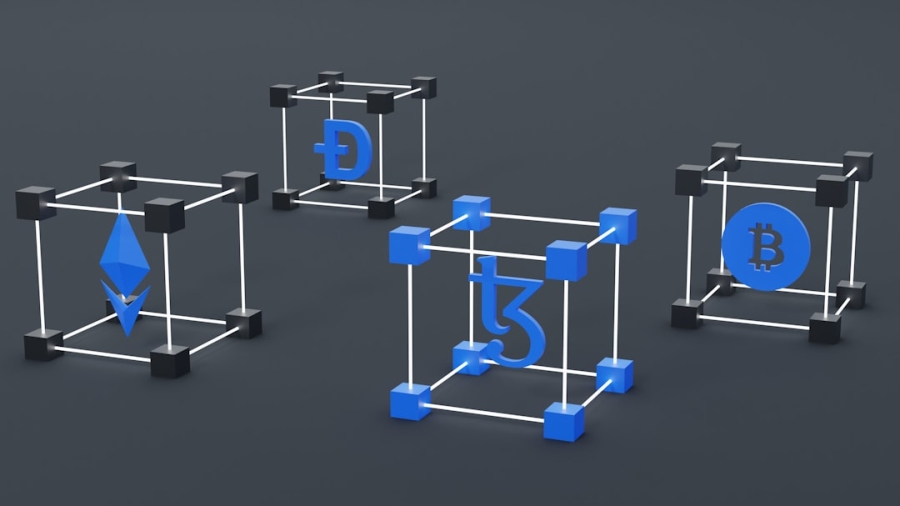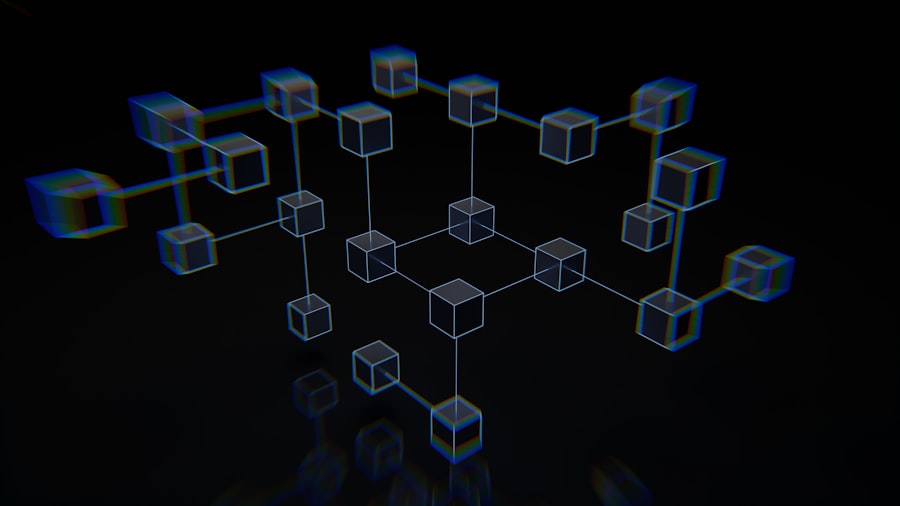Decentralized Finance, commonly referred to as DeFi, represents a transformative shift in the financial landscape, leveraging blockchain technology to create an open-source, permissionless financial ecosystem. Unlike traditional finance, which relies on centralized institutions such as banks and brokers to facilitate transactions and manage assets, DeFi operates on a decentralized network of computers. This structure allows for peer-to-peer interactions without the need for intermediaries, thereby reducing costs and increasing accessibility.
The core components of DeFi include smart contracts, which are self-executing contracts with the terms of the agreement directly written into code. These smart contracts automate processes such as lending, borrowing, and trading, enabling users to engage in financial activities with greater efficiency and transparency. The DeFi ecosystem encompasses a wide range of financial services, including decentralized exchanges (DEXs), lending platforms, yield farming, and stablecoins.
Each of these services operates on blockchain networks, primarily Ethereum, which has become the backbone of many DeFi applications due to its robust smart contract capabilities. Users can lend their assets to others in exchange for interest, trade cryptocurrencies without relying on centralized exchanges, or earn rewards through liquidity provision. The democratization of finance is a key tenet of DeFi; it aims to provide financial services to anyone with internet access, regardless of their geographical location or socio-economic status.
This shift not only empowers individuals but also challenges the traditional financial system by offering alternatives that are often more efficient and cost-effective.
Key Takeaways
- DeFi refers to a financial system built on public blockchains that allows for the creation and use of financial services without the need for traditional intermediaries.
- Advantages of DeFi include accessibility, transparency, and the potential for lower fees and faster transactions compared to traditional finance.
- Challenges and risks of DeFi include smart contract vulnerabilities, regulatory uncertainty, and the potential for market manipulation.
- Blockchain technology plays a crucial role in DeFi by providing a secure and transparent platform for financial transactions and smart contracts.
- DeFi has the potential to disrupt traditional financial institutions by offering alternative financial services and greater financial inclusion for underserved populations.
The Advantages of Decentralized Finance
Accessibility Without Borders
Traditional financial systems often impose barriers such as high fees, lengthy approval processes, and geographical limitations that can exclude large segments of the population from participating in financial activities. In contrast, DeFi platforms are designed to be open to anyone with an internet connection, allowing individuals from developing countries or those without access to traditional banking services to engage in lending, borrowing, and trading activities.
Efficiency and Transparency
The elimination of intermediaries in DeFi reduces transaction costs and speeds up processes, making financial services more efficient and user-friendly. Moreover, all transactions conducted on blockchain networks are recorded on a public ledger, which means that anyone can verify and audit these transactions at any time. This level of transparency fosters trust among users and reduces the risk of fraud or manipulation that can occur in centralized systems.
Democratic Governance and Community Empowerment
Many DeFi protocols are governed by decentralized autonomous organizations (DAOs), where token holders can vote on important decisions regarding the platform’s development and operations. This democratic governance model empowers users and aligns the interests of the community with the success of the platform, creating a more equitable financial ecosystem.
The Challenges and Risks of Decentralized Finance
Despite its numerous advantages, DeFi is not without its challenges and risks. One of the primary concerns is security; while blockchain technology is generally considered secure, vulnerabilities in smart contracts can lead to significant financial losses. Hacks and exploits have occurred in various DeFi projects, resulting in millions of dollars being stolen from users’ wallets.
The complexity of smart contracts can also make it difficult for average users to understand the risks involved fully. As a result, there is a pressing need for improved security measures and audits within the DeFi space to protect users from potential threats. Another challenge facing DeFi is regulatory uncertainty.
As this sector continues to grow rapidly, governments around the world are grappling with how to regulate these new financial instruments and services. The lack of clear regulations can create an environment of ambiguity for both users and developers, potentially stifling innovation or leading to unintended consequences. Additionally, regulatory scrutiny may lead to increased compliance costs for DeFi projects, which could hinder their ability to operate freely.
Balancing innovation with consumer protection will be crucial as regulators seek to establish frameworks that ensure safety without stifling the growth of this burgeoning industry.
The Role of Blockchain Technology in Decentralized Finance
Blockchain technology serves as the foundation for DeFi by providing a secure and transparent infrastructure for financial transactions. At its core, blockchain is a distributed ledger that records all transactions across a network of computers in a way that is immutable and tamper-proof. This characteristic is essential for building trust among users who may not know each other or have any prior relationship.
By utilizing blockchain technology, DeFi platforms can offer services that are not only efficient but also resistant to censorship and fraud. The decentralized nature of blockchain ensures that no single entity has control over the entire network, which aligns perfectly with the principles of DeFi. Moreover, blockchain technology enables the creation of various financial instruments that were previously impossible or impractical within traditional finance.
For instance, tokenization allows real-world assets such as real estate or art to be represented digitally on a blockchain, making them more accessible for trading and investment. Additionally, decentralized oracles can provide real-time data feeds to smart contracts, allowing them to execute based on external conditions such as market prices or weather events. This integration of blockchain technology into financial services not only enhances efficiency but also opens up new avenues for innovation within the DeFi space.
The Impact of Decentralized Finance on Traditional Financial Institutions
The rise of DeFi has significant implications for traditional financial institutions, challenging their long-standing business models and prompting them to rethink their strategies. As DeFi platforms continue to gain traction among users seeking lower fees and greater accessibility, traditional banks may find themselves under pressure to adapt or risk losing market share. The ability for individuals to lend and borrow without intermediaries poses a direct threat to banks’ traditional roles as lenders and custodians of funds.
Consequently, many financial institutions are exploring ways to integrate blockchain technology into their operations or even develop their own digital currencies to remain competitive in this evolving landscape. Furthermore, the emergence of DeFi has sparked discussions about the future role of regulation in finance. Traditional banks operate within a heavily regulated environment designed to protect consumers and maintain stability in the financial system.
However, as DeFi operates outside these frameworks, it raises questions about consumer protection and systemic risk. Financial institutions may need to collaborate with regulators to establish guidelines that ensure safety while allowing innovation to flourish. This dynamic could lead to a hybrid model where traditional finance incorporates elements of DeFi, creating a more resilient and inclusive financial ecosystem.
The Future Potential of Decentralized Finance
Seamless Interoperability and AI-Driven Insights
Improved interoperability between blockchain networks will create a more cohesive ecosystem, allowing users to navigate DeFi platforms without friction. The integration of artificial intelligence (AI) and machine learning will further enhance DeFi’s capabilities, analyzing vast amounts of data to provide insights into market trends or optimize lending protocols based on user behavior.
Personalized Financial Services and Global Impact
These advancements will lead to more personalized financial services catering to individual preferences and risk profiles. As DeFi continues to evolve, it has the potential not only to disrupt traditional finance but also to redefine how we think about money, value exchange, and economic participation on a global scale.
Redefining the Future of Finance
Ultimately, DeFi’s future is bright, with the potential to unlock new possibilities and transform the financial landscape. As the ecosystem continues to grow and mature, we can expect to see innovative solutions that address real-world problems and improve the lives of individuals around the world.
Regulatory Considerations for Decentralized Finance
As DeFi continues its rapid expansion, regulatory considerations become increasingly important for ensuring consumer protection and maintaining market integrity. Governments around the world are beginning to recognize the need for frameworks that address the unique challenges posed by decentralized systems while fostering innovation. One key area of focus is anti-money laundering (AML) and know-your-customer (KYC) regulations, which aim to prevent illicit activities within financial markets.
Striking a balance between enforcing these regulations and preserving the core principles of decentralization will be crucial for regulators moving forward. Additionally, there is an ongoing debate about how existing securities laws apply to DeFi projects that offer tokens or other digital assets. Some argue that certain tokens should be classified as securities due to their investment nature, while others contend that many tokens serve utility purposes within their respective ecosystems.
Clarity in this area will be essential for developers seeking to launch new projects without running afoul of regulatory requirements. Ultimately, effective regulation will require collaboration between industry stakeholders and regulators to create guidelines that protect consumers while allowing innovation in this rapidly evolving space.
Investing and Participating in Decentralized Finance
Investing in DeFi presents both exciting opportunities and inherent risks for participants looking to capitalize on this burgeoning sector. Individuals interested in engaging with DeFi can start by exploring various platforms that offer lending, borrowing, or trading services. However, it is essential for potential investors to conduct thorough research before committing funds; understanding the underlying technology, team behind the project, and market dynamics is crucial for making informed decisions.
Additionally, investors should be aware of the volatility associated with cryptocurrencies and DeFi tokens, as prices can fluctuate dramatically based on market sentiment or external factors. Participating in DeFi also involves navigating various protocols and understanding how they function within the broader ecosystem. Users can engage in yield farming by providing liquidity to decentralized exchanges or lending platforms in exchange for rewards or interest payments.
However, this practice comes with risks such as impermanent loss—a phenomenon where users may lose value due to price fluctuations between paired assets—highlighting the importance of risk management strategies when participating in these activities. As DeFi continues to mature, educational resources will play a vital role in helping individuals understand how best to invest and participate responsibly within this innovative financial landscape.
In exploring the transformative potential of Decentralized Finance (DeFi), it’s crucial to understand the technological advancements that underpin this revolution. A related article that delves into the latest consumer technology breakthroughs, which are integral to the development and adoption of DeFi platforms, can be found at CNET’s coverage on consumer technology breakthroughs. This article provides insights into how emerging technologies are shaping the financial landscape, offering a broader context to the rise of DeFi and its implications for the future of finance.
FAQs
What is Decentralized Finance (DeFi)?
Decentralized Finance (DeFi) refers to a movement that aims to create an open and global financial system, accessible to anyone with an internet connection. It utilizes blockchain technology to enable peer-to-peer financial services such as lending, borrowing, and trading without the need for traditional financial intermediaries.
How does DeFi work?
DeFi operates on blockchain networks, primarily Ethereum, and utilizes smart contracts to automate and execute financial transactions. Users can interact with DeFi protocols using digital wallets and decentralized applications (dApps) to access a wide range of financial services.
What are the benefits of DeFi?
Some of the benefits of DeFi include increased financial inclusion, lower barriers to entry, transparency, and reduced reliance on centralized financial institutions. DeFi also offers the potential for higher yields on savings and investments compared to traditional banking systems.
What are the risks associated with DeFi?
Risks associated with DeFi include smart contract vulnerabilities, regulatory uncertainty, market volatility, and potential security breaches. Users should exercise caution and conduct thorough research before participating in DeFi activities.
What are some popular DeFi applications?
Popular DeFi applications include decentralized exchanges (DEXs) like Uniswap and SushiSwap, lending platforms such as Compound and Aave, and yield farming protocols like Yearn.Finance. These applications enable users to trade, lend, borrow, and earn interest on their digital assets.
What is the future of DeFi?
The future of DeFi holds the potential for continued innovation and growth, with the development of new financial products and services, improved scalability and interoperability, and increased adoption by mainstream users and institutions. However, challenges such as regulatory scrutiny and technological advancements will also shape the future of DeFi.



